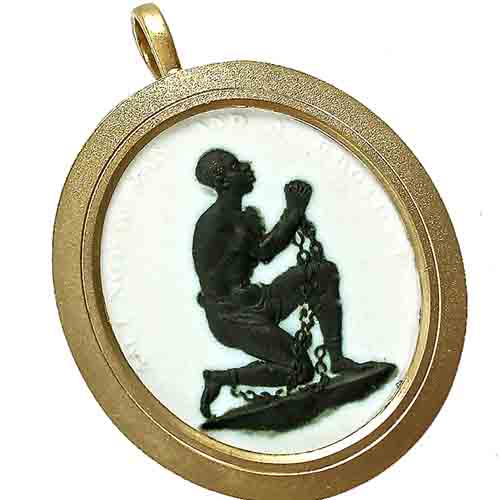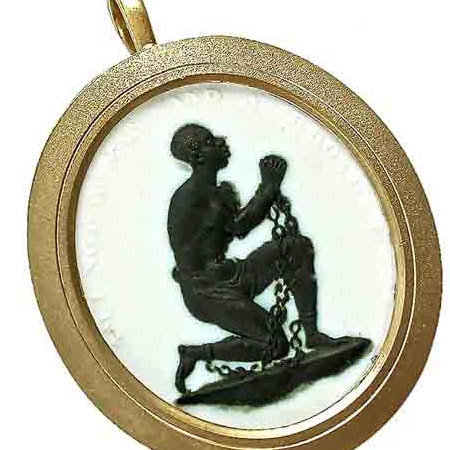Am I not a man and a brother?
An iconic late 18th century Wedgwood medallion set to a later gold pendant mount. The design for the medallion was created circa 1787 by Josiah Wedgwood, the British ceramicist and abolitionist. The image of a kneeling slave in chains with motto ‘Am I Not a Man and a Brother?’ became an international symbol of the abolitionist movement. It was widely reproduced in the late 18th century, appearing on china, snuffboxes and jewellery. Benjamin Franklin, who received a set of the medallions while serving as President of the Pennsylvania Abolition Society, wrote of the image’s effectiveness that it was ‘equal to that of the best written Pamphlet, in procuring favour to those oppressed People.’
Whilst the image became an iconic symbol of the abolitionist movement, it also touches on the historical representation of enslaved Africans. Although the image was designed to appeal to the sympathies of the British public in identifying with the cause of abolition, it also reflects the misconception of enslaved Africans as passive acceptors of their fate. In fact the opposite was true, enslaved Africans were amongst the main instigators in the fight for freedom, with black abolitionists such as Olaudah Equiano, Ottobah Cugoano and Mary Prince actively campaigning as part of the British abolitionist movement. The pendant measures 1 .5 inches by one inch. History.
sold





